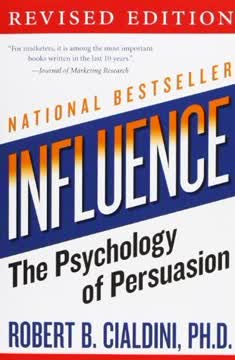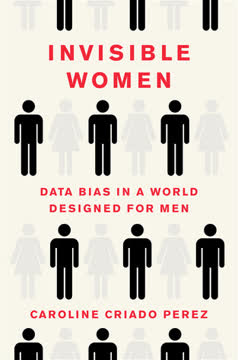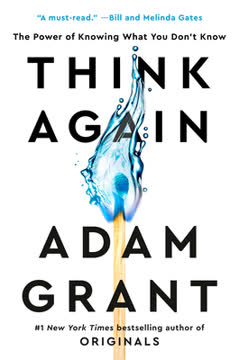Key Takeaways
1. AI + Growth Marketing = Smart Marketing: The Future of Customer Acquisition
Sooner rather than later, your customer acquisition efforts will rely on artificial intelligence, machine learning, and automation to adapt, customize, and personalize cross-channel user journeys and deliver optimal results in ways that would be impossible using last-generation business intelligence and dashboards.
The new era of marketing. AI and machine learning are revolutionizing growth marketing by enabling startups to process vast amounts of data, automate repetitive tasks, and make data-driven decisions at scale. This shift allows growth teams to focus on strategy and creativity while machines handle the heavy lifting of campaign optimization.
Customer Acquisition 3.0. This new paradigm leverages AI to:
- Orchestrate complex, cross-channel campaigns
- Dynamically allocate budgets
- Optimize creative assets in real-time
- Surface actionable insights
- Take autonomous actions to improve performance
By embracing AI-powered marketing automation, startups can significantly accelerate their growth, reduce customer acquisition costs, and improve return on ad spend.
2. The Intelligent Machine Framework: Automating User Acquisition
The most tangible benefit of AI when it comes to marketing automation is to help growth teams to run tens of thousands (not hundreds) of different experiments a month in parallel.
Framework components. The Intelligent Machine Framework consists of:
- Customer journey understanding
- Creative assets and content
- Data for segmentation and targeting
- API access to marketing channels
- Feedback loop for optimization
- Machine learning algorithms for performance improvement
Rapid experimentation. AI enables growth teams to conduct exponentially more experiments than humanly possible. This accelerated learning process leads to:
- Faster identification of effective strategies
- More efficient budget allocation
- Continuous optimization across all marketing channels
- Personalized user experiences at scale
By leveraging this framework, startups can create a virtuous cycle of testing, learning, and scaling that outpaces manual efforts and drives superior results.
3. Metrics that Matter: Focusing on Key Performance Indicators
It's much easier to measure success for AI when it's completely aligned with supporting your business KPI goals.
Critical KPIs. Successful growth teams focus on these key metrics:
- Customer Acquisition Cost (CAC)
- Retention Rate
- Customer Lifetime Value (LTV)
- Return on Advertising Spend (ROAS)
- Conversion Rate
Data-driven decision making. By aligning AI efforts with these KPIs, startups can:
- Objectively measure the impact of their marketing efforts
- Optimize campaigns for long-term business success
- Demonstrate clear ROI to stakeholders and investors
- Continuously refine their growth strategies
It's crucial to avoid vanity metrics and instead focus on indicators that directly correlate with business growth and profitability. AI systems should be trained to optimize for these specific KPIs, ensuring that all marketing efforts contribute to meaningful business outcomes.
4. Creative Performance: The Power of AI-Driven Ad Optimization
The creative is the single biggest lever to impact your campaign performance.
AI-powered creative optimization. Leveraging AI for creative performance involves:
- A/B testing at scale across multiple variables
- Dynamic creative adaptation based on user data
- Real-time optimization of ad placements and formats
- Personalization of creative elements for different audience segments
Human-AI collaboration. While AI excels at data analysis and optimization, human creativity remains crucial for:
- Developing compelling ad concepts
- Crafting brand narratives
- Ensuring emotional resonance with target audiences
- Interpreting AI insights to inform creative strategy
By combining human creativity with AI-driven optimization, startups can create highly effective ad campaigns that continuously improve based on real-time performance data.
5. Build vs. Buy: Deciding on Your AI Solution Strategy
The goal in startups is to minimize cost now and cost later. Therefore, the deciding factor is delivering something of value that your growth team can leverage to start generating revenue from it.
Key considerations:
- Core competency: Is AI development within your startup's expertise?
- Resource allocation: Can you afford to divert resources from your primary product?
- Time to market: How quickly do you need an AI solution?
- Customization needs: Do off-the-shelf solutions meet your specific requirements?
- Long-term maintenance: Can you support ongoing AI development and updates?
Strategic approach. For most startups, partnering with an AI SaaS provider offers the best balance of:
- Rapid implementation
- Cost-effectiveness
- Access to cutting-edge technology
- Scalability as your business grows
However, some startups with unique needs or AI-centric business models may benefit from building proprietary solutions. The key is to align your AI strategy with your overall business goals and resource constraints.
6. Managing Complexity and Risk in AI Implementation
The challenge is to find the right balance between asking for too much or too little user data during the signup/registration/checkout flows and on-boarding.
Key challenges:
- Data acquisition and quality
- Privacy concerns and regulatory compliance
- Integration with existing systems
- Team adaptation and skill development
- Transparency and explainability of AI decisions
Risk mitigation strategies:
- Start with small, well-defined projects to demonstrate value
- Invest in data infrastructure and governance
- Develop clear privacy policies and user consent mechanisms
- Provide ongoing training and support for team members
- Implement monitoring systems to ensure AI performance and compliance
By proactively addressing these challenges, startups can minimize risks and maximize the benefits of AI implementation in their growth strategies.
7. The Future Growth Team: Humans and AI Working Together
The choice isn't humans versus machines, but how you can best leverage artificial intelligence and human intelligence to work well together by complementing their strengths and weaknesses.
Evolving roles. The future growth team will be lean and highly skilled, focusing on:
- Strategic planning and creative direction
- Interpreting AI insights and making high-level decisions
- Managing cross-functional relationships
- Overseeing AI system performance and ethical considerations
AI responsibilities:
- Data analysis and pattern recognition
- Campaign optimization and budget allocation
- Real-time performance monitoring and adjustments
- Personalized content delivery across channels
This symbiotic relationship between humans and AI will enable growth teams to achieve unprecedented levels of efficiency and effectiveness in customer acquisition and retention.
8. Data as the Lifeblood: The Importance of Customer Data Platforms
As the lifeblood of AI, getting a CDP in place is critical to help you get the business insights you need to move your business forward to fully tap into the superpower of AI.
CDP benefits:
- Unified customer profiles across all touchpoints
- Real-time data collection and analysis
- Enhanced segmentation and personalization capabilities
- Improved data privacy and compliance management
Implementing a CDP:
- Centralize data from all sources (online and offline)
- Create persistent, unified user profiles
- Implement real-time analytics and segmentation
- Enable data sharing across systems and channels
A robust CDP forms the foundation for effective AI-driven marketing, enabling startups to leverage their customer data for more targeted and efficient growth strategies.
9. Overcoming Ongoing Challenges in AI Adoption
The challenge is to ensure that the different channels you test are easily integrated into your AI intelligent machine.
Persistent challenges:
- Keeping pace with rapidly evolving AI technologies
- Adapting to changing privacy regulations and user expectations
- Combating sophisticated ad fraud
- Integrating new marketing channels and technologies
- Managing team transitions and potential downsizing
Strategies for success:
- Invest in ongoing education and skill development
- Stay informed about regulatory changes and proactively adapt
- Implement robust fraud detection and prevention measures
- Maintain a flexible, modular AI architecture to accommodate new channels
- Foster a culture of innovation and adaptability within the team
By anticipating and addressing these challenges, startups can maintain a competitive edge in the ever-changing landscape of AI-driven growth marketing.
10. Winning Together with AI: A Holistic Approach to Startup Success
The winning together mindset has to be built into the startup culture so that AI is seen as friend and not foe.
Key success factors:
- Executive leadership and company-wide buy-in
- Clear alignment of AI initiatives with business goals
- Cross-functional collaboration and knowledge sharing
- Continuous learning and adaptation
- Ethical considerations and responsible AI use
Implementing a winning AI strategy:
- Start with well-defined, high-impact use cases
- Invest in data infrastructure and quality
- Develop AI expertise across the organization
- Foster a culture of experimentation and learning
- Continuously measure and communicate AI impact
By adopting a holistic approach to AI implementation, startups can leverage this powerful technology to drive growth, improve efficiency, and create sustainable competitive advantages in their respective markets.
Last updated:
FAQ
1. What is Lean AI by Lomit Patel about?
- AI-driven growth marketing: Lean AI explores how startups can leverage artificial intelligence and machine learning to accelerate customer acquisition, retention, and revenue growth.
- Intelligent machine framework: The book introduces the concept of an “intelligent machine” that automates and optimizes marketing campaigns across multiple channels using data-driven insights.
- Comprehensive startup guide: It combines Lean Startup principles with AI-powered automation, offering practical frameworks for building, buying, and integrating AI solutions tailored to startup needs.
- Managing complexity and risk: The book also addresses how to handle the challenges of scaling, data management, and the evolving role of humans in AI-driven growth teams.
2. Why should I read Lean AI by Lomit Patel?
- Actionable AI strategies: The book provides a pragmatic roadmap for startups to implement AI and automation in marketing, bridging the gap between hype and real-world application.
- Real-world experience: Lomit Patel shares insights and case studies from his work at IMVU and other startups, illustrating successful AI-driven growth strategies.
- Future-proofing teams: It prepares readers for the future of marketing, where human creativity and AI automation work together, and highlights the skills and structures needed for success.
- Risk and challenge awareness: The book discusses potential pitfalls such as data privacy, algorithmic bias, and compliance, helping readers anticipate and navigate these issues.
3. What are the key takeaways from Lean AI by Lomit Patel?
- AI as a growth accelerator: Startups can dramatically scale user acquisition and retention by automating marketing tasks and optimizing campaigns with AI.
- Data is foundational: High-quality, unified first-party data is essential for effective AI-driven marketing and personalization.
- Experimentation at scale: AI enables running thousands of marketing experiments simultaneously, accelerating learning and campaign optimization.
- Human-AI collaboration: The most successful growth teams blend human creativity and strategic thinking with AI’s data processing and automation capabilities.
4. What are the best quotes from Lean AI by Lomit Patel and what do they mean?
- “Compete on the rate of learning.” This highlights the importance of rapid experimentation and adaptation in AI-driven marketing.
- “AI is only as good as the data you feed it.” Emphasizes the critical role of high-quality, well-governed data in achieving effective AI outcomes.
- “The future of growth is a hybrid team of humans and intelligent machines.” Stresses the need for collaboration between human marketers and AI systems for sustainable growth.
- “Don’t scale what doesn’t work.” Reminds startups to validate product/market fit before investing heavily in AI-powered acquisition.
5. How does Lean AI by Lomit Patel define and use the concept of an “intelligent machine” in marketing?
- Automated campaign management: The intelligent machine is an AI-powered system that autonomously manages budgets, bids, creatives, and audience targeting across channels.
- Continuous optimization: It uses machine learning algorithms to run and optimize thousands of experiments in real time, improving campaign performance and efficiency.
- Data-driven insights: The system processes vast amounts of structured and unstructured data to surface actionable insights and predict customer behavior.
- Reducing manual workload: By automating repetitive tasks, the intelligent machine frees marketers to focus on strategy and creative development.
6. What is the Growth Stack framework in Lean AI by Lomit Patel and how should startups use it?
- Three core layers: The Growth Stack consists of Acquisition, Engagement and Retention, and Monetization, all supported by Analytics and Insights.
- Strategic selection: Startups should choose a mix of activities from the stack that align with their stage and strengths, focusing on measurable impact.
- Third-party tools: Leveraging external platforms for stack elements is recommended to avoid resource drain and stay current with best practices.
- Analytics as foundation: The Analytics and Insights layer enables data-driven decisions through cohort analysis, event tracking, and sentiment analysis.
7. How does Lean AI by Lomit Patel define Customer Acquisition 3.0 and its significance?
- AI-powered acquisition: Customer Acquisition 3.0 uses AI and cloud-based data to manage paid user acquisition holistically, with real-time optimization across channels.
- Intelligent automation: AI systems dynamically allocate budgets, optimize creatives, and surface insights autonomously, reducing human dependency.
- Competing on learning speed: The approach emphasizes running many experiments simultaneously to extract insights faster and maximize ROI.
- Holistic campaign management: Moves beyond siloed data and manual processes, enabling startups to scale acquisition efficiently.
8. What are the most important metrics for startup growth according to Lean AI by Lomit Patel?
- Customer Acquisition Cost (CAC): Measures the cost to acquire a new customer; must be significantly lower than Customer Lifetime Value (LTV) for profitability.
- Retention Rate: Indicates customer loyalty and product value; cohort analysis is recommended to understand retention dynamics.
- Customer Lifetime Value (LTV): Estimates total revenue from a customer, guiding acquisition investment decisions.
- Return on Advertising Spend (ROAS) and Conversion Rate: Help optimize marketing budgets and evaluate campaign effectiveness.
9. What are the key user acquisition strategies recommended in Lean AI by Lomit Patel?
- Paid acquisition: Optimize paid channels like Google and Facebook, maintaining a healthy LTV:CAC ratio and using lookalike audiences for targeting.
- Virality: Encourage word-of-mouth growth through product love, viral loops, incentives, and influencer marketing.
- Content marketing: Create valuable content to attract organic traffic, improve SEO, and build community over time.
- Strategic partnerships and product innovation: Collaborate with aligned businesses and continuously improve the core product to expand reach and engagement.
10. How does Lean AI by Lomit Patel recommend deciding between building or buying AI solutions for marketing?
- Problem definition: Clearly articulate the marketing problem and assess if third-party solutions meet your needs or if custom development is required.
- Budget and timeline: Consider available resources and urgency; buying SaaS solutions is faster and less costly upfront, while building offers long-term customization.
- Risk assessment: Building involves technical debt and requires AI expertise; buying risks include data security and vendor reliability.
- Hybrid approach: Start by buying and later build niche components as needed for unique use cases.
11. What are the main risks and challenges of using AI in startup growth, according to Lean AI by Lomit Patel?
- Data dependency: AI’s effectiveness relies on high-quality, consistent first-party data; poor data leads to suboptimal results.
- Transparency and bias: Complex AI models can be “black boxes” and may perpetuate biases in training data, requiring monitoring and ethical alignment.
- Compliance and privacy: Regulations like GDPR impact data collection and usage, posing challenges for AI-driven personalization.
- Adaptability: AI models must handle changes in data patterns (“concept drift”) to maintain accuracy and relevance.
12. How does Lean AI by Lomit Patel describe the future collaboration between humans and AI in growth teams?
- Complementary strengths: AI excels at data processing and automation, while humans provide creativity, strategy, and empathy.
- Evolving roles: Growth team roles will shift toward managing AI tools, designing experiments, and interpreting insights, with routine tasks automated.
- Skill development: Future marketers need a blend of business, technical, and creative skills to guide AI-driven growth.
- Lean squads: The book recommends small, cross-functional teams focused on acquisition, retention, and monetization, working closely with AI systems.
Review Summary
Lean AI receives mixed reviews, with ratings ranging from 1 to 5 stars. Positive reviews praise its concise yet thorough introduction to AI in marketing, offering valuable insights for startups and growth-stage companies. Critics argue that the book lacks substance, relying heavily on jargon and filler content. Some readers feel it focuses more on general marketing principles than AI specifics. Despite divided opinions, many found the book useful for understanding digital marketing strategies and AI applications in customer acquisition and growth.
Similar Books
Download PDF
Download EPUB
.epub digital book format is ideal for reading ebooks on phones, tablets, and e-readers.








